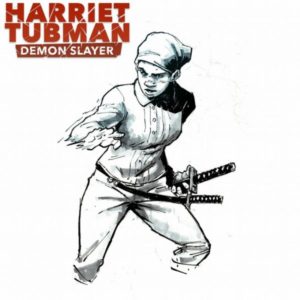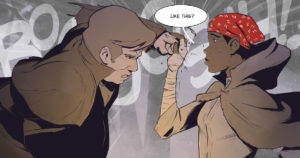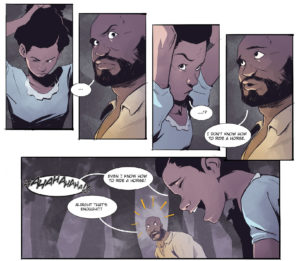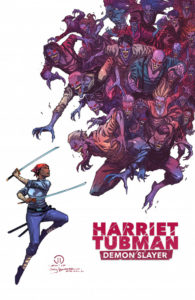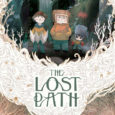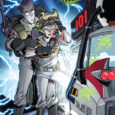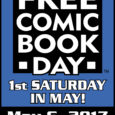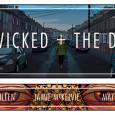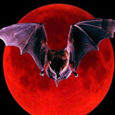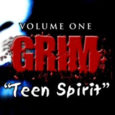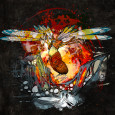For a few years back in the early 2010s horror mash up stories were all the rage. Take an innocuous but well known thing and mix it with a fantasy horror trope and a new hit was made. These were most evident through books like Pride and Prejudice and Zombies and Abraham Lincoln: Vampire Hunter and probably a few others not written by Seth Grahame-Smith. Though that genre has been dormant for a few years, it’s come back quite well with the recent release of Harriet Tubman: Demon Slayer.
Written by David Crownson, Harriet Tubman: Demon Slayer takes place (appropriately) in 1860, deep in the heart of America’s days of Slavery. It opens with a slave family, the Edgefields, as they escape their plantation in search of a life as free folk. When they run afoul of a trio of shady white men, the Edgefields stand their ground only to discover that these men aren’t exactly what they seem to be. Luckily, a mysterious stranger, the eponymous Harriet Tubman, shows up to save them.
One of the things I liked most about the book is the humor. Within the first couple of pages, Crownson makes a joke at the expense of one of his characters and it’s brilliant because it serves a higher purpose than a mere moment of levity. In addition to setting the tone for the book, that initial joke lets the audience know that despite the heady subject matter, they’re allowed to laugh at the story. This is a necessary cue for readers like me, a middle class white man, during the times that the N-word gets bandied around. That word would (rightfully so) make modern audiences uncomfortable but was necessary to tell a story that borrowed heavily from the time of slavery and Harriet Tubman’s real-life struggle. Crownson breaks the ice early to alleviate any possible squeamishness.
The art on the book is superb. Courtland Ellis’ art is smooth, his figures realistic and graceful. There are no overly muscular men rippling through torn shirts. His women aren’t bodaciously disproportioned, and in fact have noticeably different body types. Ellis uses subtle facial expressions on his characters to portray emotions and tip the readers off to what they’re thinking, but he’s then able to go all out during the funny moments. It can be a jarring juxtaposition at times but really ramps up the humor.
The art isn’t perfect, though. Most of the pages are beautiful, however, there’s some panel progression that feels off. Some of the character movement is choppy and stilted, which is detrimental in a book that relies heavily on fight scenes. Thankfully, it’s easy to overlook because there are so many other things to enjoy but hopefully it improves as the series progresses.
Ellis also shines in how he draws backgrounds, notably in the way he uses large brushstrokes to signify foliage. It’s drastically different from mainstream comics and I absolutely love it.
My biggest problem with the book is the dialogue. While most of the characters’ speech is smooth and energetic, the story is sprinkled with one-liners that just seem trite and unnecessary. It tended to be more good than bad, though.
I also wasn’t a fan of the localized dialect. This was probably included to show how different groups speak differently and was effective in establishing the world the story takes place in. I felt like it slowed down the reading experience, forcing me to puzzle out what the characters were saying. I understand that I’m splitting hairs here and maybe sound a little pedantic but this was definitely my take away from the reading experience.
Also, I need to point out the book’s poor punctuation. Normally I don’t even notice the lettering in comic books but the fact that this drew my attention means that it really stood out. Granted, some of the punctuation choices may have been stylistic but there are some instances that are just inconsistent, making the lettering come off as lazy or rushed. Again, I have hope that this will be remedied in future issues.
Despite its flaws, though, one thing that Crownson gets right is the mystery surrounding Harriet Tubman: Demon Slayer. His opening chapter focuses on establishing the characters. He doesn’t dive too far into why the vampires are chasing runaway slaves or even where Harriet comes from. We know nothing of her past, her upbringing, or how she knows how to fight. Crownson reveals just enough to whet my appetite but not too much that I lose interest and don’t return for the second issue.
Having purchased Harriet Tubman: Demon Slayer on a whim during Free Comic Book Day (it was funded through a successful Kickstarter), I have no idea how to get a physical copy of the book. However, you can buy it in digital on Comixology and Peep Game Comix. And I wholly recommend you pick it up. Not only is this book a fun read but it’s also an interesting take on the horror mash-up genre and the life of one of the most prolific American humanitarians.
Grade: B-
 Another month, another book review.
Another month, another book review.
For the month of May, I was sent City Under The Moon, a debut novel by one of the insanely amazing minds behind Robot Chicken, Hugh Sterbakov. Not being a connoisseur of this particular genre and with the added headache of the last book I reviewed leaving me a little jaded on the experience, I delved into this story expecting the worst and came away with a new found respect for the horror genre. At least, if the other stories in this genre are anything like City Under The Moon.
In an effort to correctly portray real life situations with a dash of superstition thrown into the cauldron, City Under The Moon is about a CDC response to a virus outbreak in Manhattan where everyone transforms into a hairy beast via moonlight. And that’s when it hit me. This book is about WEREWOLVES. In Manhattan. I almost expected a cheesy 80s song to kick in and Taylor Lautner to rip his shirt off while I rolled my eyes and heaved into the nearest receptacle.
But Hugh’s take on the strain is a little bit different, thank the Old Gods and the New.
After the Twilight fancraze, I vowed to stay tail length away from anything involving Werewolves, so I was initially a little turned off by the subject matter. At 470 pages, Hugh Sterbakov’s painstaking research into the mythology of the mutts was not what I expected from the Twilight aftermath. It also really helps the skepticism a little when the title page has quotes by Seth Green and Mila Kunis. They seem like people you just want to trust.
City Under the Moon was sent to me in .PDF form so that I could read anytime, anywhere via my Nook Color. Though there seems to be a compatibility issue where all punctuation is erased, that small detail wasn’t enough to stop me from enjoying the first few chapters of Brianna Tildascow’s super practical police work.
With an opening that charges right into the thick of the action and a hospital hijack bloodbath, be sure to clear out your schedule. Between long hours at work and a beat-your-ass convention schedule, I was left struggling to find time in which to devour the narrative and find out where the story was headed. This was the first mistake of many I made as I packed my Nook for A-Kon 23 and tried to read anytime I could sneak in a spare moment.
City Under the Moon has a lovingly crafted George R. R. Martin-esque writing style feel, complete with the point of view shifts that I’ve come to love reading. The majority of the story spotlights on FBI counterterrorism specialist and femme fatale Brianna Tildascow, who prefers to be known by her surname only. However, the narrative isn’t one dimensional as it takes us into the minds of minor characters who all have an impact on the bigger picture. Lon Toller, the government enlisted and self proclaimed “werewolf expert” who is also a bit of a Dungeons & Dragons nut on the side, socially awkward Dr. Jessica Tanner with her mousy but firm demeanor, and even one impressively written chapter from the big baddie himself, Demetrius Valenkov round out all of the supporting characters with believably fleshed out personalities and a relatable thought process. There is no wondering why the bimbo ran upstairs when the killer is in the house.
Normally, I am completely desensitized to all fashions of gore, but City Under The Moon is not a “wake up and read over your bowl of Corn Pops” kind of book.The enthralling plot coupled with a threat of bioneucleur retaliation sets up a very action packed climax, with the parallels between ultimate hunters Valenkov and Tildascow’s personalities surprisingly well balanced. Cleverly INTERWOLVEN (hah. puns.) with pop culture references galore, my only minor problem fell in the form of the fairer sex, as Sterbakov is no Joss Whedon in the women-writing department. But kudos to him for holding his own in this first novel, as he has nowhere to go but up.
A fully researched work that has no problems taking risks, City Under The Moon is a credit to it’s genre. If you are a fan of the occult, lots of details and thrilling action stories, definitely check it out.
You can find City Under the Moon via Amazon in both Paperback or e-reader format, or even snag yourself an autographed copy at the official website.
City Under The Moon is the kind of book that makes you want to grab a glass of wine, huddle up under some blankets, and make sure your dog is at your feet and not contorting into some hideous elongated version of the pooch you know and love. Or maybe that’s just me.


